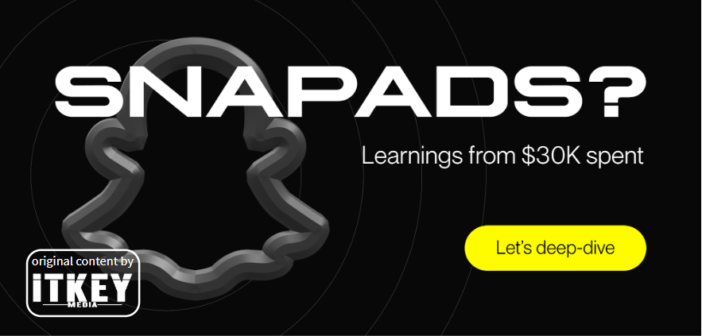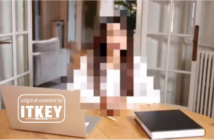With 10 years of experience as a growth manager, I’ve helped 50+ consumer tech startups scale through platforms like Meta, Google, TikTok, and Twitter Ads. Yet, many founders still overlook Snapchat. In reality, with it’s 450M daily active users and USD 10B in annual ad-driven revenue, it is a powerful growth channel for the B2C brands—but only if used correctly.
That’s why I’ve put together this practical guide based on the case of memoryOS—a startup that scored USd 30K in free SnapAds through the Traction Builder accelerator by TRMNL4. They tested the platform, figured out what actually works and what doesn’t, and how to get real results. Let’s deep dive.
Key Stats You Should Know
- 450M daily active users (DAU) and 850M monthly active users (MAU).
- 60% of users are aged 13-24, making it an ideal platform for Gen Z-focused startups.
- USD 10B in direct sales generated through advertising.
- 5 billion snaps are created every day.
- The audience is projected to grow 8x by 2028.
Lessons Learned
Wins:
- 20% lower CPA in the first week after optimization.
- 30% Higher Event Score after improving MMP tracking and event parameter passing.
- Successfully adapted top Meta creatives for Snapchat without restarting the production process. Adding overlays & emojis improved CPA vs. direct repurposing from other platforms.
Takeaways:
- Creative adaptation is crucial. We tested 150+ creatives, but only 1–2% performed well. More time is needed upfront to refine creatives.
- Underestimated the learning phase requirements, leading to slower optimization. Initially expected results within a day, but it actually took 3-4 days with 5+ target events per day, demanding higher budgets and extended timelines.
- Didn’t allocate enough budget to properly scale the best-performing ads.
How we did it—read below.
It all starts here: Step 0–the tech setup that made ads work
- Pixel & Event Score: Make sure your pixel is fully integrated and transmitting as many event parameters as possible to boost your Event Score. Allocate at least 10 hours for a thorough setup.
- Learning Phase: To pass learning phase, your campaign needs a minimum of 5 purchases per day.
- Here’s how we launched: Started with Lowest Cost bidding + broad targeting. Let the algorithm do its thing and find the right users.
Step 2: Creatives that worked and those that flopped
The ad format here is different. These were our biggest takeaways:
- Test multiple creatives: Run at least 3-5 creatives per ad set.
- Bundle similar geo-regions: Grouping similar countries reduces CPMs.
- Native style: Add native elements like a grey text box with emojis and platform-styled overlays.
- Micro-iterations: When a creative works, make multiple minor variations to maximize performance. We did at least 5 variations.
What didn’t work:
- Copy-pasting creatives from other platforms without adjustments.
- Long hooks don’t work—hooks are important, but don’t make them too boring and too long.
- Static image ads—video outperforms static by a huge margin.
Best-performing creatives .library link.
Insights on bidding & budget
Here’s what we learned:
- Let’s be real—you need at least USD 5K to run tests that actually mean something. No budget—no real data.
- Bidding Strategy: Start with the Lowest Cost bid strategy to let the algorithm optimize freely.
- Scaling Strategy: For winning creatives, move to Target Cost bidding with 20-30% higher bids than your target CPA.
Targeting & Geography: Where it worked best
- Broad targeting = 99% more reach. Let algorithm do its thing.
- Regional bundling helps reduce CPMs. Grouping similar countries — such as Tier 1 Europe or Scandinavian regions — significantly reduces costs.
- Geos that performed best: Testing across 13 regions, we found that the USA was the strongest market with the highest LTV. Sweden saw cheaper acquisition due to a co-founder’s local recognition. The UK performed well, but LTV data was inconclusive.
Checklist: Spot the red flags before it’s too late
This ad channel isn’t the right fit for every startup. Here’s the real talk checklist to see if you’re set up for success—or just burning cash.
- You’re in B2C: EdTech, mobile apps, e-commerce, fintech, SaaS targeting SMBs
- Your target audience is 18-35
- You’ve already tested other paid channels and are looking to diversify
- You have pixel properly set up and resources for A/B testing
- You’re ready to invest at least USd 5K for the first test—but there are ways to secure up to USd 30K in ad credits through Traction Builder.
If you check at least three, it’s time to test.

Anna Shchehula is an ex-Growth Manager who helped startups scale 4x, a startup mentor, and active speaker on female leadership. Currently, she holds the position of the Partnerships & Programs Manager at TRMNL4 where she collaborates with big names like Meta, Snapchat, and leading VCs, supporting 8K+ startups that have collectively raised over USD 16M.





